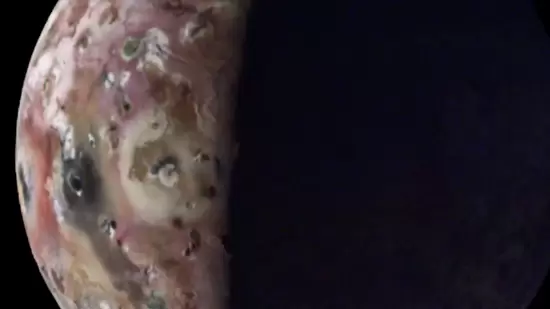NASA shares stunning photo of Jupiter’s hellish moon Io, snapped by Juno mission spacecraft
NASA's Juno mission spacecraft has taken an incredible detailed image of Jupiter's moon Io.
Jupiter is the biggest planet in the solar system and it has a huge number of moons, unlike Earth which has just one. And notably, while the Earth’s satellite is a gentle and unremarkable world, the Jovian moons are quite active and volatile places that would terrify anyone. In fact, it has been dubbed as being the most volcanically active moon in the solar system. Io is just a little bit bigger than our moon. And now, US space agency, the National Aeronautics and Space Administration (NASA), has shared some terrifying images of Juipter’s moon Io.

Read More: Fossils found in Gujarat's Kutch may belong to largest snake ‘Vasuki’: Study
These have been derived from the recent flybys of the Juno mission spacecraft and these have been turned into some stricking animations that highlight two of the Jovian moon’s most dramatic features: a mountain and an almost glass-smooth lake of cooling lava.
As per NASA's report, Juno executed remarkably tight flybys of Io in December of 2023 and February of 2024. Juno, which is powered by solar energy, ventured to a distance of approximately 930 miles (1,500 kilometers) from the moon's surface, capturing the first close-up snapshots of its north region.
Read More: It’s Taken 100 Scientists Two Years to Rename Airborne Viruses After Covid Mistakes
Scott Bolton, Juno's lead researcher revealed that volcanoes are all over this moon and several were even seen in their active state. The spacecraft also provided close-up views and gathered data on a lava lake there known as Loki Patera, which spans 200 kilometers (127 miles) in length.
The data recording suggest that parts of the moon’s surface are as smooth as glass. Bolton compared it to volcanically created obsidian glass back on our planet.
Read More: This amazing volcano is raining gold dust on Earth - 80 gms a day worth $6000
Among the many discoveries made are that Io’s surface is relatively smooth compared to Jupiter’s other Galilean moons. And that its poles are colder than its middle latitudes.
About Juno mission spacecraft
Launched on August 5, 2011, NASA’s Juno spacecraft was sent on a 5-year journey to Jupiter. Juno’s many discoveries have changed our view of Jupiter’s atmosphere and interior. However, after half-a-decade, its prime mission was over, it did flybys of the moon Ganymede. In effect it became a full Jovian system explorer. Now, Juno is in its extended mission that will continue till September 2025, or until it reaches its end of life period. This extension has led the spacecraft to also invetsigate two moons of Jupiter - Io and Europa.






